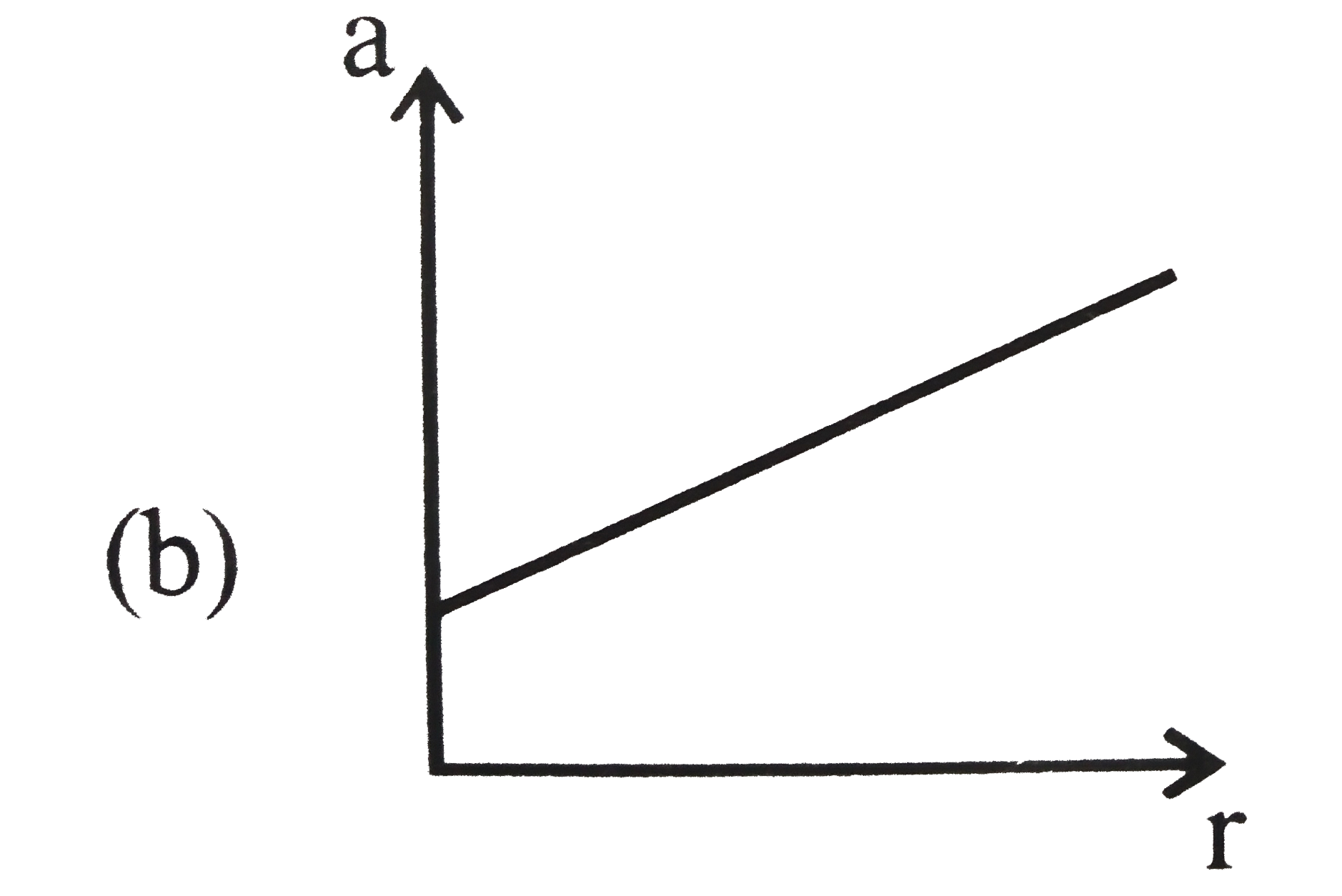A particle is moving in a circular path ofradius rat a constant speed v. Which one of the following graphs correctly represents its acceleration a?




The correct Answer is:D
To solve the problem, we need to analyze the motion of a particle moving in a circular path at a constant speed and determine the nature of its acceleration.
1. Understanding Circular Motion:
- A particle moving in a circular path at a constant speed is undergoing uniform circular motion. In this type of motion, the speed (magnitude of velocity) remains constant, but the direction of the velocity changes continuously.
2. Identifying the Type of Acceleration:
- In uniform circular motion, the particle experiences centripetal acceleration, which is directed towards the center of the circular path. This acceleration is responsible for changing the direction of the velocity vector.
3. Formula for Centripetal Acceleration:
- The formula for centripetal acceleration ac is given by:
ac=v2r
where v is the constant speed of the particle, and r is the radius of the circular path.
4. Analyzing the Relationship:
- From the formula ac=v2r, we can see that the centripetal acceleration is inversely proportional to the radius r. This means that as the radius r increases, the centripetal acceleration ac decreases, provided that the speed v remains constant.
5. Choosing the Correct Graph:
- Given that ac is inversely proportional to r, the graph that represents this relationship will show a decreasing trend as r increases.
- Therefore, the correct graph will depict acceleration a on the y-axis and radius r on the x-axis, showing that as r increases, a decreases.
6. Conclusion:
- Based on the analysis, the correct option is the one that shows a decreasing curve, which corresponds to the fourth option.
- A particle moving in a circular path at a constant speed is undergoing uniform circular motion. In this type of motion, the speed (magnitude of velocity) remains constant, but the direction of the velocity changes continuously.
- In uniform circular motion, the particle experiences centripetal acceleration, which is directed towards the center of the circular path. This acceleration is responsible for changing the direction of the velocity vector.
- The formula for centripetal acceleration ac is given by:
ac=v2r
where v is the constant speed of the particle, and r is the radius of the circular path.
- From the formula ac=v2r, we can see that the centripetal acceleration is inversely proportional to the radius r. This means that as the radius r increases, the centripetal acceleration ac decreases, provided that the speed v remains constant.
- Given that ac is inversely proportional to r, the graph that represents this relationship will show a decreasing trend as r increases.
- Therefore, the correct graph will depict acceleration a on the y-axis and radius r on the x-axis, showing that as r increases, a decreases.
- Based on the analysis, the correct option is the one that shows a decreasing curve, which corresponds to the fourth option.
Topper's Solved these Questions
Similar Questions
Knowledge Check
An object moves in a circular path with a constant speed. Which one of the following statements is correct?
AThe centripetal acceleration of the object is smaller for a gentle curve (i.e., curve of larger radius) than that for a sharp curve (i.e., curve of smaller radius).BThe centripetal acceleration is greater for a gentle curve than that for a sharp curve.CThe centripetal acceleration is the same for both the gentle and sharp curves.DThe centripetal acceleration causes the object to slow down.A body is moving in a circular path with a constant speed. It has .
AA constant velocityBA constant accelerationCAn acceleration of constant magnitudeDAn acceleration which varies with time in magnitudeA particle is moving on a circular path with constant speed, then its acceleration will be
AZeroBExternal radial accelerationCInternal radial accelerationDConstant acceleration
If a particle is moving along a circular path with constant speed, then Its motion is
View SolutionA particle is moving on a circular path of radius R with constant speed v. During motion of the particle form point A to point B

View SolutionA particle is made to move in circular path with decreasing speed. Which of the following is correct ?
View SolutionAn object moving in a circular path at constant speed has constant
View SolutionA particle is moving on a circular path with a constant speed 'v'. Its change of velocity as it moves from A to B is:

View Solution
